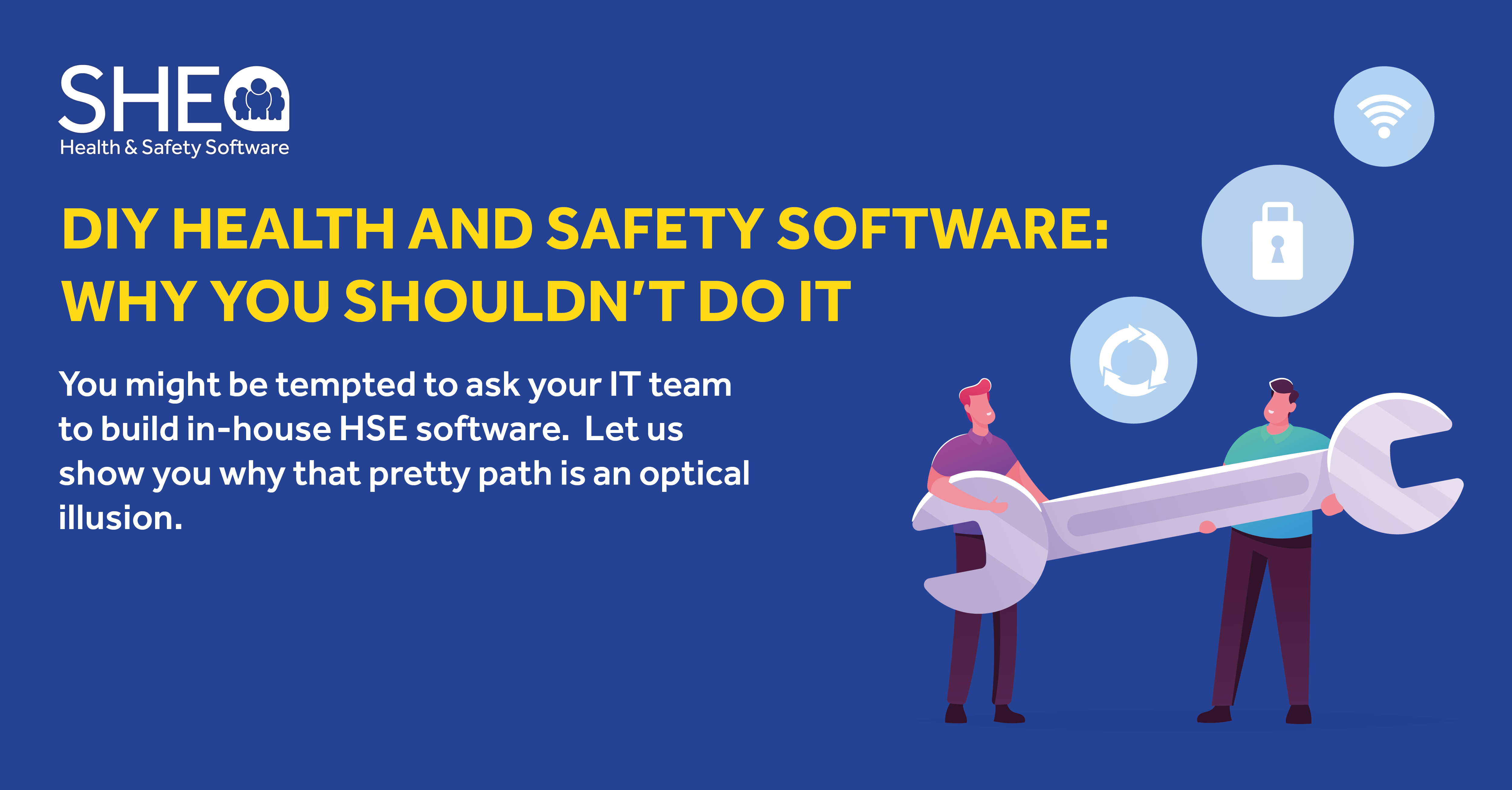Contents
DIY health and safety software: Why you shouldn’t do it
16 February 2021 - Evotix
Who doesn’t love do-it-yourself (DIY) projects? The home improvement channels are filled with programs that show eager homeowners taking on a major renovation project or novices trying their hands at flipping a property. The programs show these DIYers encountering a few bumps along the way, but in the end, it all works out. You yourself might have installed a bathroom vanity or built your own deck with a Pergola and felt the satisfaction of having increased the value of your house or made it more liveable.
Our love of DIY often means we want to apply it everywhere. For example, you might be tempted to ask your IT team to build in-house HSE software or customize an existing system to automate health and safety management. In this article, we’ll show you why that pretty path is an optical illusion.

Appearances are deceiving
Internal systems appear to be an attractive option in terms of initial costs and creation, but it’s mostly a mirage. In-house software and application development is not a walk in the park. After you determine the requirements and architecture, here’s a simplified view of the process IT will follow:
- Select a front-end and a back-end framework, libraries, data stores, and APIs.
- Choose the deployment stack, set up continuous integration, and an operations plan.
- Hand-code the user interface (UI) in JavaScript.
- Write a bunch of tests.
- Define the data models and hook them up to data stores.
- Define the code and logic.
- Create views to provide and receive JSON data to and from the front-end.
- Implement workflows and UI.
- Test and repeat until the tests pass.
- Run the build and test for security, performance, quality, and user acceptance.
These steps don’t even include building a mobile application for capturing incidents and accidents as soon as it happens.
Is it any wonder that it can take up to two years to build ‘in-house’ enterprise software? In the meantime, who knows how much data is escaping and critical information is going unused because it’s buried in paper files and spreadsheet software.
Do you have what it takes?
Even if you do miraculously have in-house expert resources with EHS knowledge! on your IT team who can design and build the system, including the mobile application, there are other aspects to consider:
- Who is going to maintain the entire system, including the mobile application?
- Who will provide first-line support?
- Who will update and maintain the system when industry legislation and regulations change or new ones are issued?
- Who will train and manage the internal stakeholders using the system?
While it may appear beneficial in the short-term, the reality is that building your own in-house HSE software requires an immense investment in time, effort and finances in the long term. We commonly see organisations having to reopen their discussions after months because they have not made any successful progress towards the delivery of a usable in-house system.
What about customizing a system already in place?
Another trap companies fall into is thinking that their in-house IT team can simply take a system that is already in place, usually an HR system, and add custom health and safety reporting capabilities. The truth is, building a data dashboard on top of an existing system or adding reports for new regulations is almost as painful as starting from scratch.
That’s just one of the issues. Another is the fact that EHS software requires processes and tools to support team engagement, the real-time capture of incidents, accidents, safety observations and the subsequent management required for its submission. You also need predictive views and trends analysis so you can manage health and safety proactively, along with visibility of compliance, non-compliance, and areas for improvement. No matter how skilled your team is, that much customization could break any in-house system not configured for those workloads.
Then, there’s getting employees to use the system. This is true of either customized systems or those built from the ground up. Many homegrown systems are not easy-to-use because they have been around for ages, or they are designed for employees who use workstations. If someone must stop what they’re doing to find a workstation, log into a system, and write a description of an incident, for example, they won’t be inclined to engage. And if they don’t participate, all your work will have been wasted.
Don’t go it alone: Invest in software built by experts in the health and safety space
Investing in a solution that is easy to use, ensures a full flow of data and engages employees and management along the way, is the most effective approach to automating health and safety processes. SHE Software’s health and safety management solution, Assure, ensures that your organisation can manage workplace safety through mobile devices leading to increased engagement and real-time reporting. Your employees can use our multi-lingual web application to report an incident no matter where they are with online and offline capabilities. To learn more, schedule a chat with us.
RELATED BLOGS

Finding the Right Mobile Safety App: 5 Things To Look For
20 June 2023 - Evotix
A mobile safety app enhances employee safety by providing critical safety information and allowing anybody to easily report hazards or near misses they spot, supporting you in proactively managing..

A Farewell to Manual Processes: Why You Should Ditch Them For Health and Safety
18 November 2021 - Evotix
One of the great classics in American literature is A Farewell to Arms by Ernest Hemingway. In the title, “arms” naturally means weapons, but it got us thinking about human arms—the ones attached to..

